10 tips to stay safe and warm on transit this winter
10 tips to stay safe and warm on transit this winter
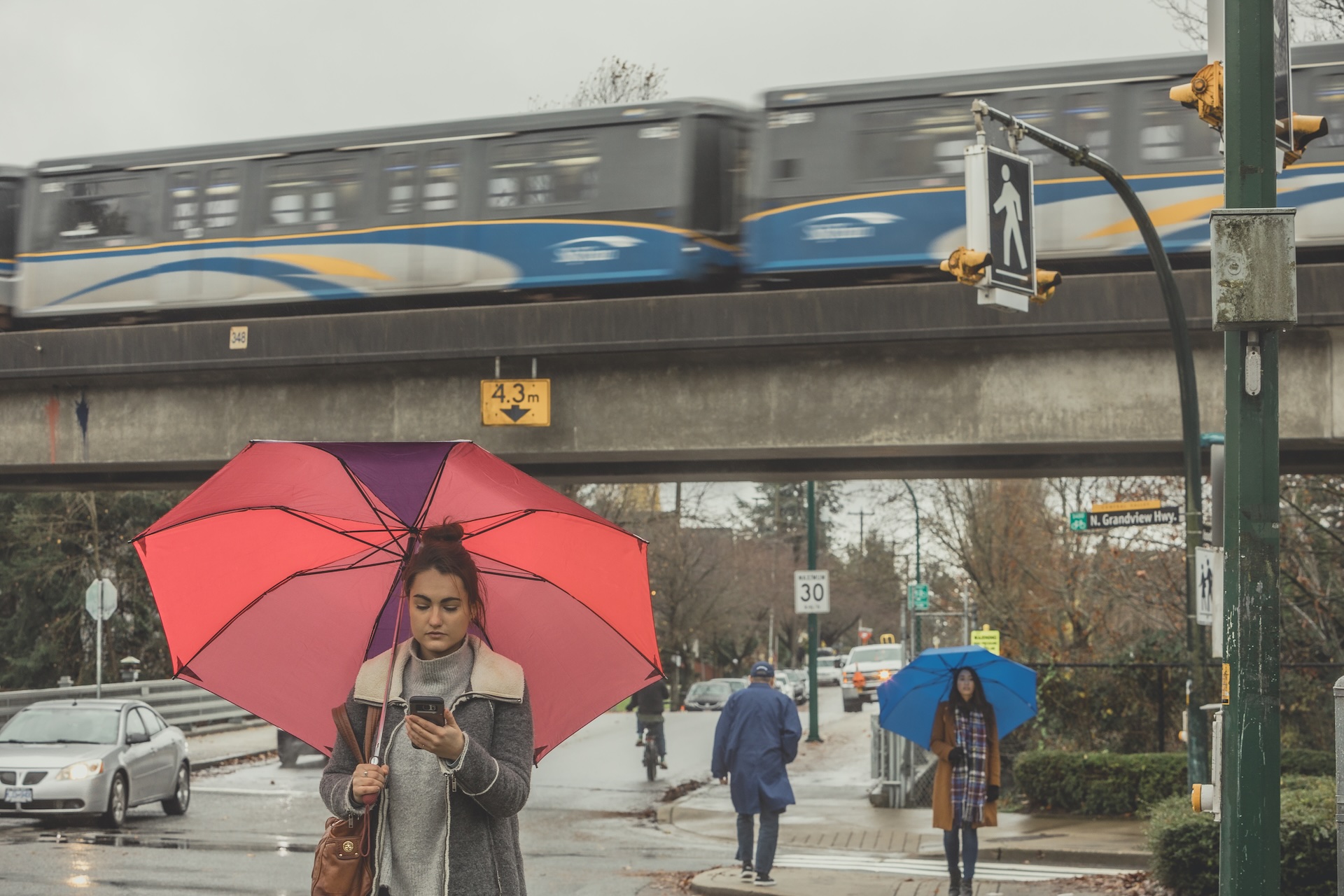
Winter is here and with it, the rain, sleet, snow and ice we frequently see around this time of year. It’s crucial to plan ahead, bundle up, and take care.
Just like you, preparation is key for TransLink too to keep our region moving during inclement weather.
Among many initiatives, we ensure our bus operators get regular training for all sorts of driving conditions and the transit system is geared up for snow in Metro Vancouver.
By being proactive, we can maintain a safe and pleasant commute for everyone. Here are some tips and resources to help you travel during the winter months:
1. Hold on when riding escalators
Please use the handrail and watch your step when riding the escalator.
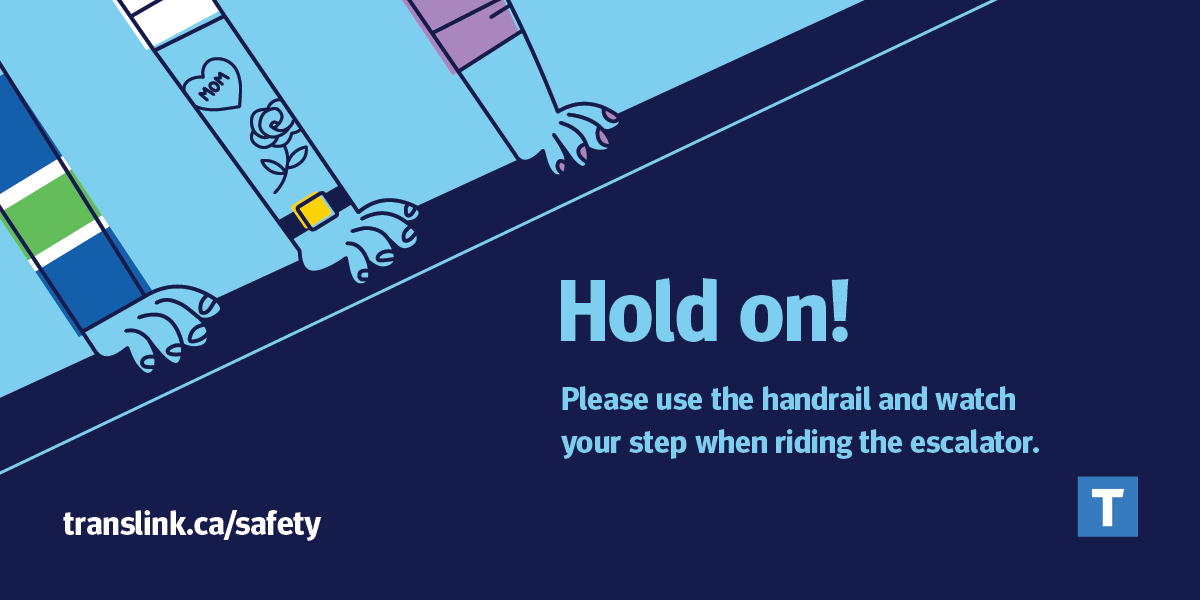
2. Watch your step
Please be careful when entering or exiting the vehicle. Take it easy and step carefully, floors may be slippery.
Precipitation and raindrops dripping from umbrellas and raincoats can make the floors slippery, so walk carefully. Stand behind the yellow line on train platforms and allow others to get off before boarding the train.
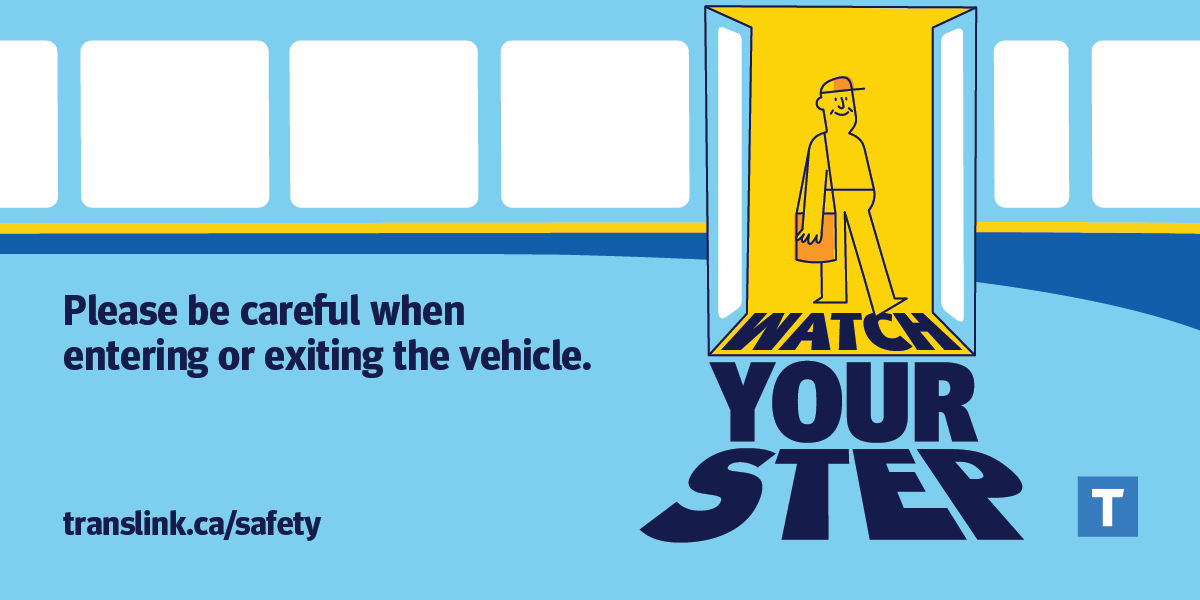
3. Need a lift? Avoid bringing large or heavy items on escalators
Please use elevators for added convenience and safety. Remember to wait for passengers to exit the elevator first.
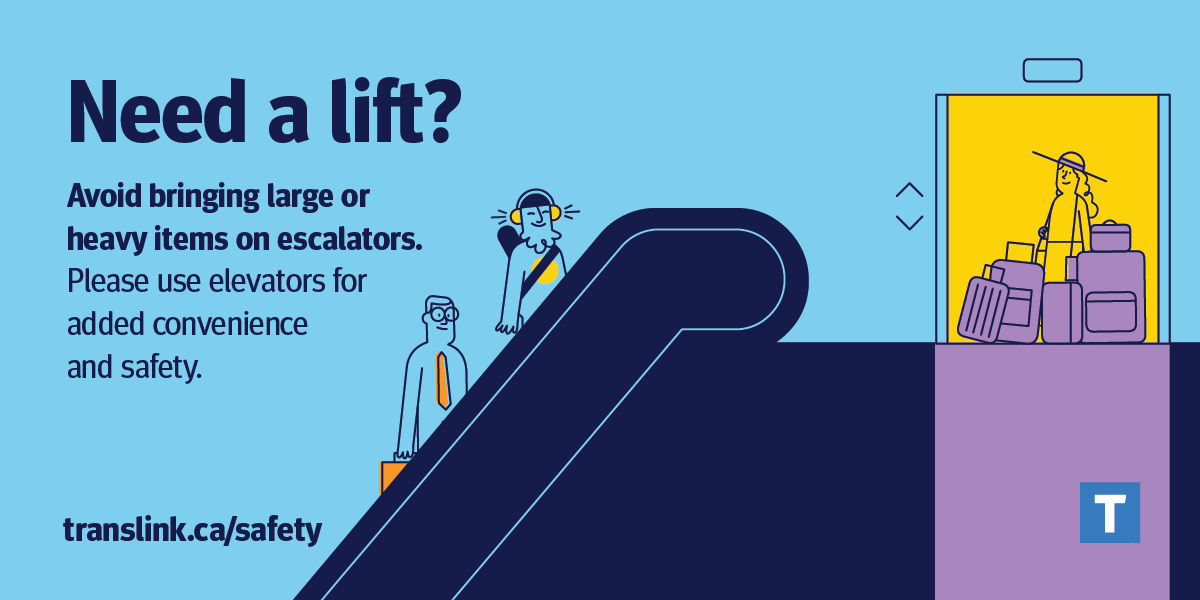
4. Dropped something? Ask for help.
Never attempt to retrieve fallen items from the guideway or tracks. Instead, alert staff for assistance. When waiting for the train, stand behind the yellow line.
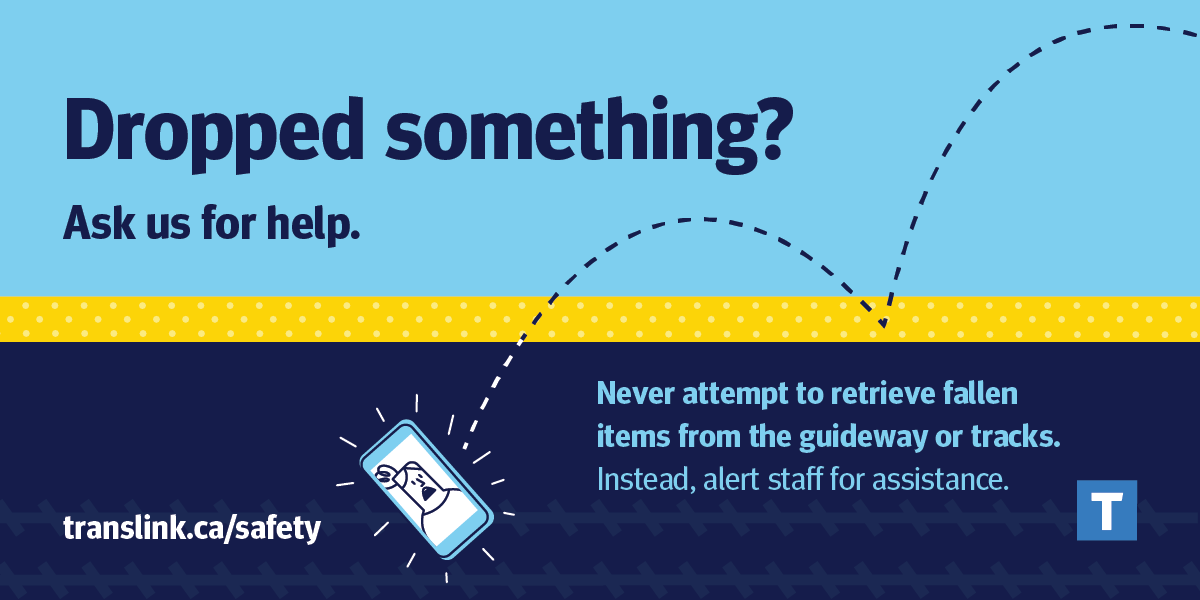
5. Hold on tight!
The bus, SkyTrain, SeaBus, and West Coast Express are moving vehicles and they can stop suddenly. Buses may also encounter unexpected bumps, potholes, or uneven surfaces on the road. Please stay seated or hold on for your safety.
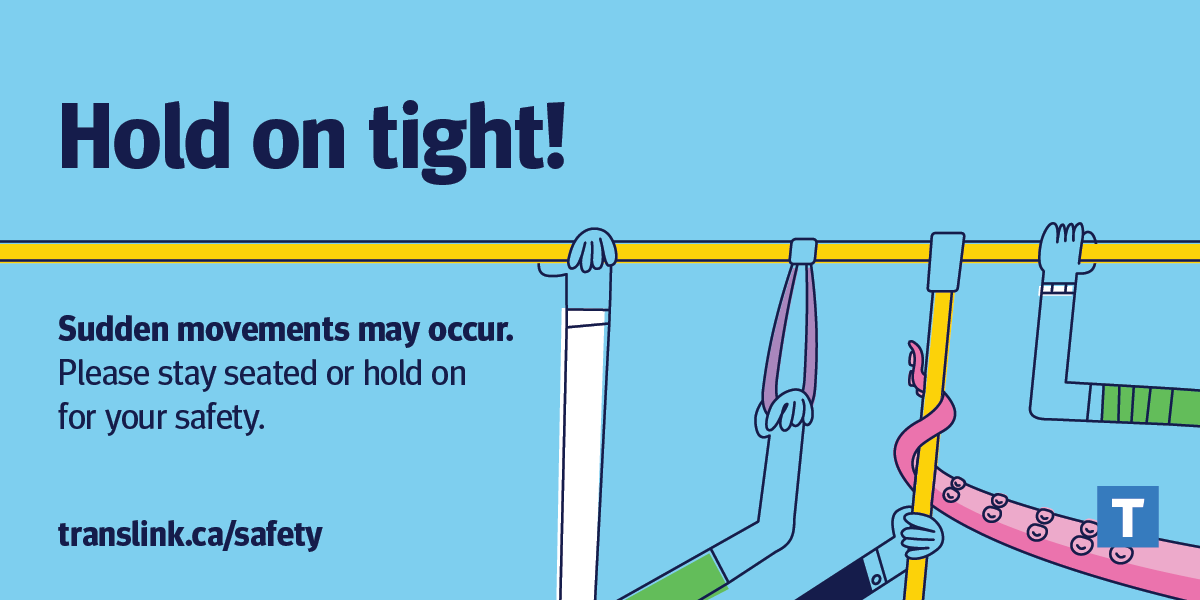
6. Dress warmly, be prepared to wait, and wear reflective clothing/accessories and non-slip shoes.
When the season changes, so do our wardrobes. Wear non-slip shoes, bright clothing, and a raincoat. For extra warmth, keep a toque, a pair of gloves or hand warmers in your bag.
Staying comfortable can be crucial to your transit commute. Dress in layers as temperatures fluctuate throughout the day and mode you’re travelling on.
Forecasts are fairly accurate closer to real time than a week before, so check the forecast on your weather app or the news before preparing to leave home. Look for any changes in temperature and chances of rain or snow so you can plan if it’s a windbreaker kind of day or a raincoat kind of day.
7. Add extra travel time
We prioritize safety above all else. Operators will drive slower and with added caution during adverse weather to keep customers safe. Contractors are salting and sanding. Transit Supervisors are doing what they can to help keep buses moving as reliably as possible.
On snow days, it won’t be the same service as you would expect in July on a sunny day, so please be patient.
Conditions can change rapidly and our buses are only as reliable as the roads they travel on. A sudden dump of snow can make routes impassable for our buses until they’re plowed by city crews.
8. Walk, don’t rush for your train or bus
There’s a time and a place to get your cardio in and running for transit isn’t one of them. Go slow and step carefully, the floors may be slippery. When it’s snowing or icy, wear shoes with good grip.
Plan to arrive to your stop earlier than the bus’s expected arrival. Trains run frequently so no need to rush.
9. Keep an eye out for your bus
Stand at the bus stop pole and make sure the operator sees you, so they know you want to board the bus. Wearing bright or reflective clothing or accessory can help. You can also use your hand or phone with its screen on to give your operator a simple wave.
During snow days, operators may not be able to pull into a bus stop, and instead will stop in an area that is safe and accessible nearby.
Visibility is low when it’s dark and foggy outside. Reduce distractions and stay aware of your surroundings to keep yourself and others safe.
10. Know before you!
Even if you know your route inside out and back again, brush up on your route with Trip Planner. We update schedules four times a year as part of our Transit Service Changes. There might now be other ways to travel to your destination, or you might be able to leave a little bit later to get to work or school on time. In preparation for inclement weather, it’s also good to know your options in case buses are detoured.
Check Transit Alerts, your one-stop shop to find out if there are any changes to your route. Create an account and we’ll text or email you updates as they happen, so you can know before you go.
Use Next Bus online to find real time and scheduled bus information, or have text messages sent to your smartphone with Next Bus SMS. Text your bus stop number, and up to two bus route numbers, to 33333 (Std msg rates may apply) and we’ll send you the next two departure times for those routes.
You can also call Customer Information for assistance (604.953.3333) or tweet us @TransLink.
![]()
Visit our Winter Travel Guide for more safety tips and resources!





